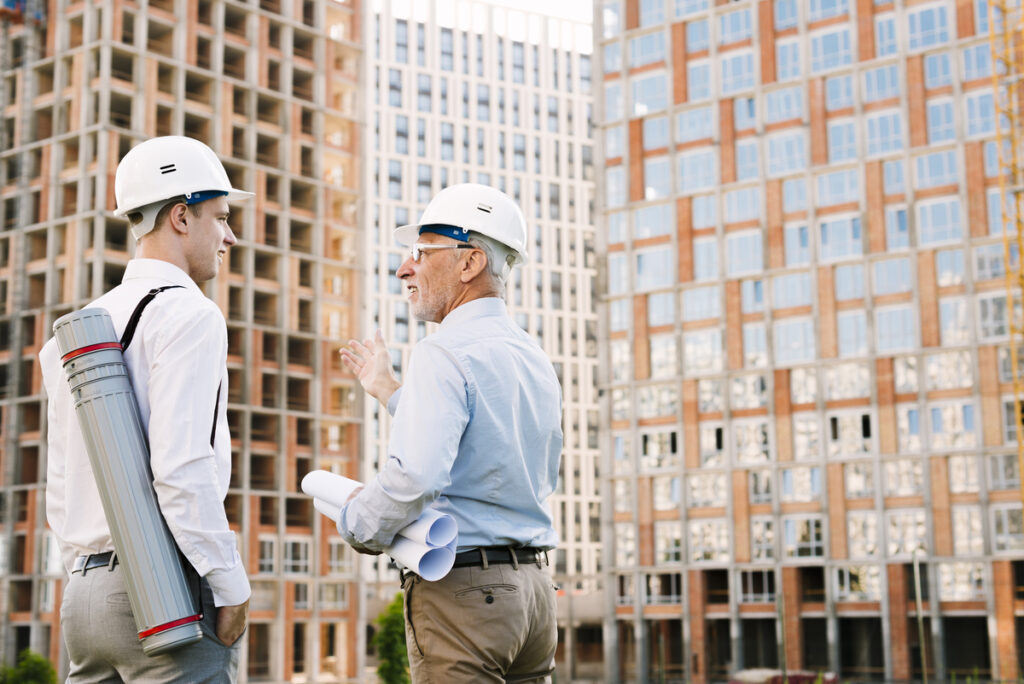Exclusive Neuroject Article: Effective management is the key to success in the dynamic world of construction projects. Mastering the art of construction management is crucial for completing projects on schedule, within budget, and to the highest standards whether you’re an experienced construction expert or a new entrepreneur entering the field. This article offers a thorough overview of some of the most important construction management advice that can have a big impact on any project’s result.
Careful planning and organization are the cornerstones of effective construction management. The ability to develop a clear strategy, establish reasonable milestones, and wisely manage resources can streamline the entire project lifecycle. Additionally, effective resource management and optimization are crucial for boosting project productivity. The cost-effectiveness and completion times of a project can be dramatically impacted by knowing how to manage personnel, supplies, and equipment effectively.
It is imperative to guarantee compliance and safety on the construction site. For construction management to be successful, flexibility and problem-solving abilities are essential. Unexpected difficulties are a necessary component of the building process, and being able to spot and address problems right once can be the difference between success and failure.
With these crucial construction management pointers at your disposal, you’ll be prepared to handle the challenges of any project with assurance, paving the way for success in the always-changing construction sector.
Table of Contents
An Introduction to Construction Management
Effective construction management techniques are essential to the success of any project in the fast-paced and constantly changing world of construction. The construction sector has new potential and difficulties as we enter 2024, necessitating creative methods to project planning, execution, and control. Construction workers and project managers need to arm themselves with the most recent ideas and techniques to successfully navigate this dynamic environment.
This detailed manual offers 17 crucial construction management pointers that can be used as a model for success in 2024 and beyond. These recommendations cover every crucial facet of construction management, from pre-construction planning to stakeholder involvement, drawing on the experience of industry experts and the most recent research. Construction teams may increase productivity, guarantee safety, keep costs in check, and execute projects of the highest caliber by heeding these suggestions.
This guide seeks to equip construction practitioners with the information they need to meet problems and exploit opportunities in the construction landscape of 2024 through in-depth analysis, real-world case studies, and helpful guidance in the construction management sector.

1. Conduct a Thorough Site Analysis
In order to ensure the success and effectiveness of a construction project, conducting a thorough site study is a vital step in the construction management process. Construction experts must carefully evaluate the site’s features, the surrounding area, and any potential difficulties before breaking ground. This procedure supports resource allocation, risk mitigation tactics, and informed decision-making.
Several important factors are included in a thorough site analysis. It starts with assessing the topographical and geographic characteristics of the location, such as the soil type, slope, and drainage patterns. This knowledge influences foundation design, excavation plans, and the decision of whether the site is suitable for construction management.
The site’s environmental impact must also be evaluated. Environmental rules are followed by locating local wetlands, water bodies, or protected places. Having a thorough understanding of weather patterns and probable natural disasters, such as earthquakes or floods, permits the deployment of effective protection measures.
2. Develop a Detailed Project Plan
An essential stage in construction management that builds the groundwork for successful project execution is creating a thorough project plan. A thorough project plan acts as a road map by detailing the project’s goals, deadlines, resource allocation, and risk analysis. It makes it possible for project managers to efficiently coordinate efforts, control resources, and monitor development over the course of construction management.
Project managers should adhere to an organized process in order to develop a precise project plan:
- Define Project Objectives: Clearly state the objectives, parameters, and anticipated results of the project. This establishes the overall project’s course and guarantees that everyone on the team understands the goal of the endeavor.
- Breakdown Work Packages: Make the project’s components smaller and more manageable. Specific deliverables, timelines, and team members in charge of each package should be included.
- Create a Work Breakdown Structure (WBS): Create a WBS chart by organizing the work packages hierarchically to show the project’s tasks and subtasks. Identification of relationships and crucial routes is made easier by this visual portrayal.
- Set Realistic Timelines: Set deadlines for each task while taking into account its complexity, the availability of resources, and any dependencies.
- Allocate Resources: Determine the human, material, and financial resources needed for each task. The proper distribution of resources guarantees efficient project execution without resource bottlenecks.
- Identify and Mitigate Risks: Make a thorough risk assessment to find potential issues and create risk-reduction plans.
- Communication and Collaboration: Create efficient channels of communication to guarantee that team members, stakeholders, and clients all have access to the same information.
Construction teams may successfully complete projects and manage difficulties proactively by creating a thorough project plan.
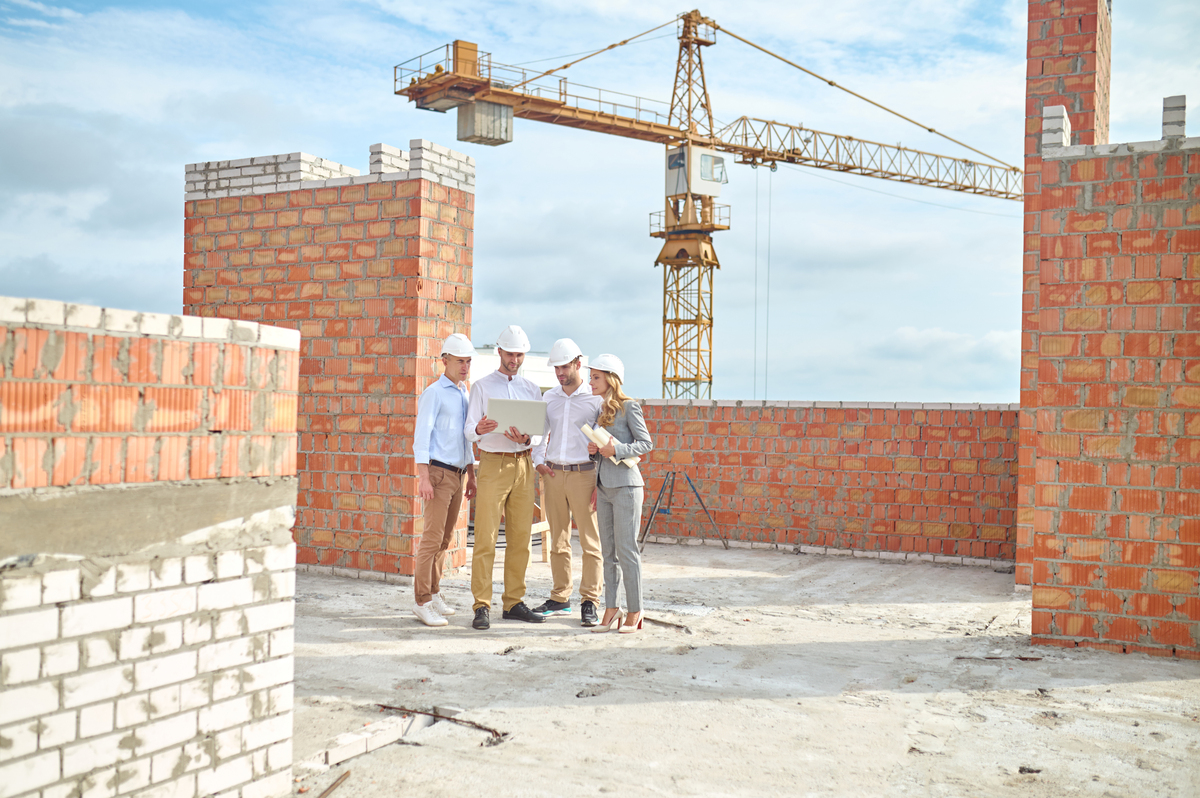
3. Assemble a Competent Team
Putting together a skilled team is essential to effective construction management. The effectiveness, quality, and timely completion of a project can all be considerably improved by a talented and cohesive team. Construction managers must do this by carefully choosing team members based on their knowledge, experience, and ability to work well together.
First and foremost, it’s crucial to pinpoint the precise roles and skill sets needed for the project. This could involve subcontractors, skilled workers, project managers, architects, and engineers. Instilling trust in the team’s ability can be accomplished by hiring professionals with a track record of success on similar projects.
Second, it’s crucial to promote a supportive and cooperative workplace atmosphere. Construction projects necessitate collaboration and cross-disciplinary cooperation. Team members are more inclined to invest themselves in the project’s success if they feel appreciated and respected.
Open channels of communication and consistent feedback can also help with problem-solving and decision-making. Effective communication helps to avoid misunderstandings and conflicts by ensuring that everyone is aware of their roles and the project’s goals.
4. Promote Effective Communication
Successful construction management is built on effective communication. It is essential for making sure that projects go off without a hitch, stakeholders are kept up to date, and possible problems are dealt with right away. Effective communication is crucial in the construction sector because of the complicated duties, multiple stakeholders, and time-sensitive projects that are commonplace.
Construction managers should use a variety of tactics to encourage successful communication. First and foremost, it’s crucial to promote an open and honest communication culture. Team members can stay linked and information flow is facilitated by regular meetings and open lines of contact like email, project management tools, or even instant messaging apps.
Second, project managers must promote attentive listening. Misunderstandings can be reduced and solutions can be jointly developed by actively listening to the issues and suggestions of the team, stakeholders, and clients.
Additionally, using visual tools like plans, progress reports, and diagrams can help all parties involved understand complex information in a simple and straightforward manner.
5. Encourage Collaboration
Promoting cooperation among team members through collaboration is a crucial component of efficient construction management. Diverse perspectives and areas of expertise are brought together through collaboration, which results in creative ideas and efficient project implementation. Collaboration between architects, engineers, contractors, subcontractors, and other stakeholders is possible in the framework of construction projects.
To encourage teamwork, open communication channels are crucial. Everyone keeps informed and engaged thanks to regular meetings, online collaboration tools, and clear documentation. Collaboration is facilitated through promoting cooperation and highlighting the common project goals, which instill a sense of ownership and accountability among team members.
Collaborative construction environments, according to studies, result in better project results. Effective collaboration decreases project delays, improves project quality, and increases overall efficiency, according to research by Carmichael et al. (2017). Additionally, a Wang et al. (2018) study emphasizes how cooperative construction approaches can enhance worker motivation and satisfaction, resulting in increased production.
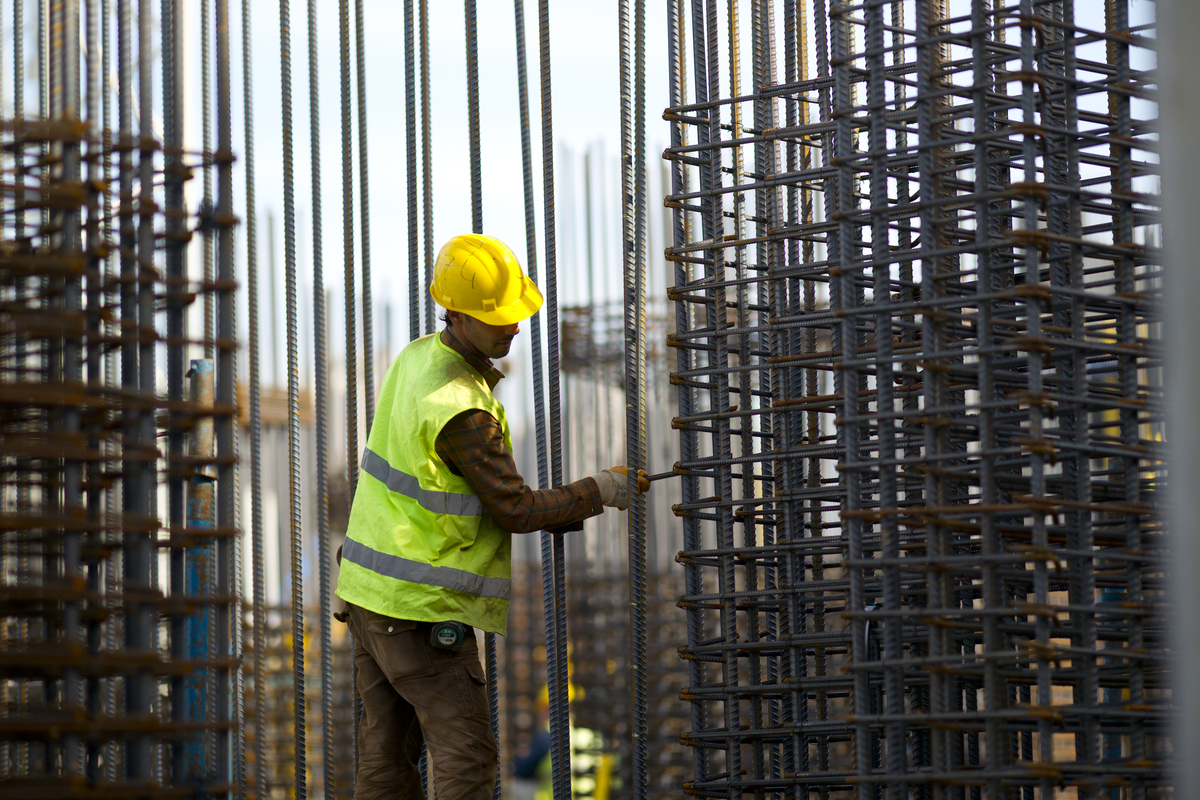
6. Identify and Assess Risks
A critical component of construction management is identifying and evaluating risks since it enables project teams to foresee and prevent potential problems before they arise, which could have a negative impact on the project’s success. A methodical approach to risk management improves decision-making, encourages a safer workplace, and ultimately helps projects run more smoothly and profitably.
Project managers and other stakeholders must carry out a thorough risk identification procedure early on in a building project. To do this, the entire project team must be involved in the brainstorming and analysis of potential risks related to a variety of issues, including design, procurement, construction, and external variables like weather or legislative changes.
Following their identification, the risks must be evaluated for both their possibility of occurring and possible impact on the project. Techniques for both qualitative and quantitative risk assessment are frequently employed for this aim. It is possible to assess the entire risk exposure and rank hazards according to their seriousness with the help of tools like risk matrices and Monte Carlo simulations.
7. Implement Safety Protocols
In order to protect workers’ health and reduce potential accidents and injuries on construction sites, implementing safety measures is an essential component of construction management. These procedures are intended to maintain safety standards, recognize and reduce potential risks, and provide a safe working environment for all parties concerned.
Construction managers must first undertake extensive risk assessments in order to establish safety protocols. They can create focused safety measures and adapt them to the unique difficulties of each project by identifying potential dangers. To ensure their safety, workers should have the required personal protective equipment (PPE) and proper training on safety measures.
Construction sites should follow pertinent safety laws and industry standards, such as those established by the Occupational Safety and Health Administration (OSHA) in the United States or comparable organizations globally, in addition to worker safety. The success of the protocols put in place must be monitored on a regular basis in order to make any necessary improvements.
8. Create a Realistic Budget
Realistic budgeting is a key component of effective construction management. A well-designed budget reduces the possibility of cost overruns, increases project efficiency overall, and helps guarantee that a construction project stays financially on track. A few crucial measures should be taken in order to create a realistic budget.
First and foremost, it is crucial to undertake a thorough cost estimation during the pre-construction stage. This entails examining the project’s scope, identifying the necessary resources, and gathering precise pricing information for supplies, personnel, equipment, licenses, and other project-related costs.
Second, it’s critical to take into consideration possibly unforeseen circumstances and uncertainties. Unexpected occurrences like design revisions or weather delays might affect construction projects. These risks can be reduced by setting aside money in the budget for contingencies.
Additionally, past project data and industry benchmarks can be useful sources of information to confirm and polish the budget. Better cost forecasting and resource allocation are made possible by analyzing data from previous, comparable projects.
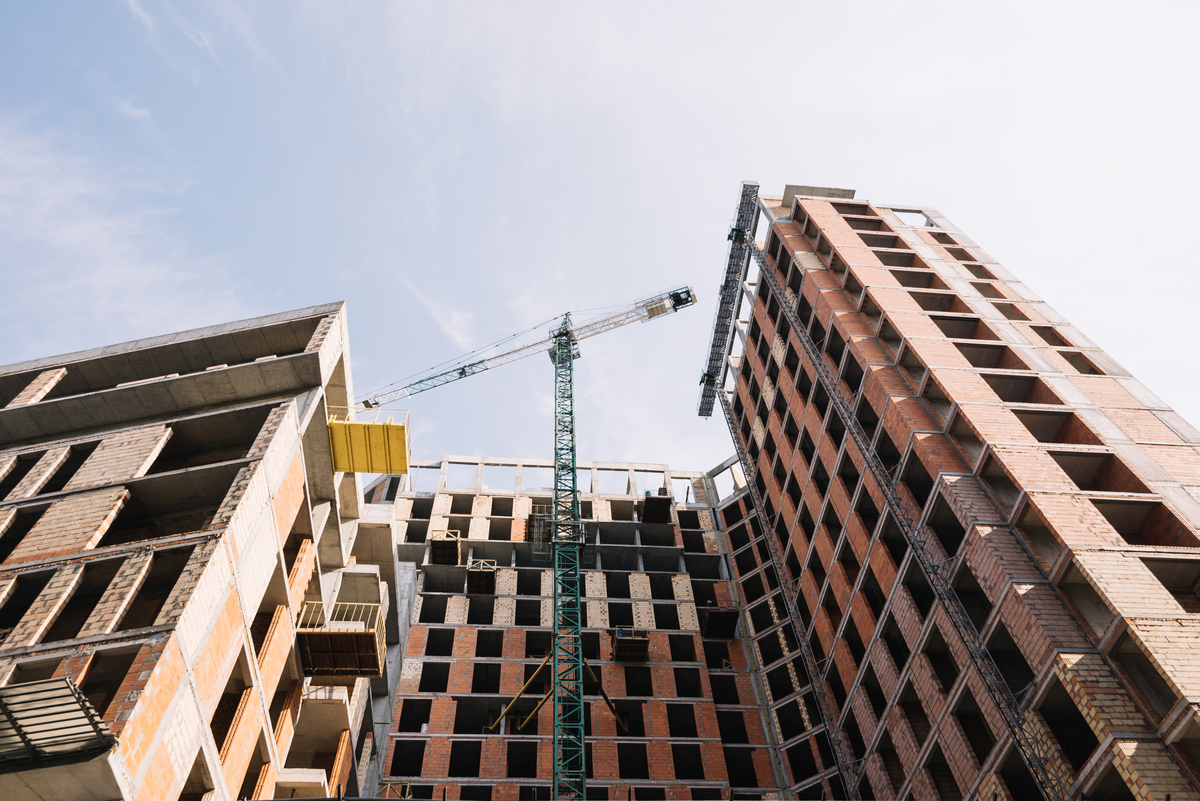
9. Monitor Costs Closely
A key component of construction management is keeping a tight eye on expenses to make sure projects stay within budget and prevent cost overruns. Project managers can spot possible problems early on and respond quickly to them by carefully monitoring spending and comparing them to the projected budget. Regularly reviewing labor, material, equipment, and other project-related charges is part of cost monitoring.
By putting in place cost-tracking tools and construction management software, stakeholders can get real-time reports on financial performance and make wise decisions. Better resource allocation, risk analysis, and timetable modifications are all made possible by efficient cost monitoring. It also promotes accountability and openness among stakeholders and team members.
Construction managers can reduce financial risks, adhere to project limitations, and guarantee effective project delivery by vigilantly monitoring expenses. The total effectiveness and profitability of construction projects are considerably increased by this method.
10. Develop a Realistic Schedule
The creation of a workable timetable is a crucial component of effective construction management. The timely, cost-effective, and high-quality completion of projects is guaranteed by a well-planned and realistic schedule. Construction managers must take into account a number of variables to develop such a plan, such as the project’s scope, the resources at their disposal, potential dangers, and the project team’s level of experience.
Conducting a thorough project analysis is the first step in developing a realistic timeline. Managers can determine the necessary activities, their dependencies, and expected durations by knowing the project’s scope and requirements. Realistic deadlines are determined using historical project data as well as lessons learned from prior initiatives.
Risks and uncertainties can be reduced by including a buffer period for unforeseen delays and leaving space for modifications and adjustments. Collaboration during planning meetings with the project team and stakeholders encourages support and makes sure that everyone agrees on the viability of the timetable.
11. Address Delays Proactively
To keep projects on track and on schedule, proactive delay management is essential in the construction management process. There are several things that can delay a project, including unforeseen site circumstances, bad weather, a lack of materials, and modifications to the project’s scope. Construction managers should use numerous ways to reduce potential delays.
Prior to the project’s launch, careful planning and risk assessment can assist detect potential delays and create backup plans. Keeping lines of communication open and effective between team members and stakeholders is also crucial. Regular project meetings and status updates can aid in the rapid resolution of any new problems.
Technology is crucial to the proactive delay control process. Advanced construction management software can help with real-time project progress monitoring, enabling early detection of any timetable violations. Construction managers can anticipate delays and make wise decisions by using historical data and project analytics.

12. Set Quality Standards
To guarantee that projects achieve the desired degree of excellence and safety, setting quality standards is an essential component of construction management. The requirements, rules, and benchmarks that must be followed when carrying out a construction project are referred to as quality standards. These requirements span a wide range of topics, such as materials, craftsmanship, procedures, and final project deliverables.
Construction managers must take into account industry best practices, norms, and laws while establishing effective quality standards. The International Building Code (IBC) and local building laws are two important sources that are cited when discussing national and international building codes in relation to construction projects.
Furthermore, thorough recommendations for material testing, installation methods, and quality control techniques are provided by sector-specific standards from organizations like the American Society for Testing and Materials (ASTM) and the Construction Specifications Institute (CSI).
13. Use High-Quality Materials
The lifespan, safety, and general success of the created structures depend on the use of high-quality materials in construction management. The structural soundness, functionality, and aesthetic appeal of structures and infrastructure are all greatly enhanced by the use of high-quality materials. Using inferior materials might result in early deterioration, higher maintenance costs, and serious safety risks in construction management.
High-quality materials have a number of advantages, including greater performance under stress and load situations, improved environmental resistance, and increased longevity. In the long run, they can help make buildings more cost-effective and ecologically friendly by assisting in the achievement of sustainability and energy efficiency targets.
Working with renowned suppliers and manufacturers who are known for their dedication to quality is crucial when acquiring materials. It is possible to make sure that the materials adhere to industry standards and legal requirements by conducting extensive research and checking certifications.
14. Embrace Construction Technology
In the current construction sector, using technology has become more and more important because it results in major improvements in productivity, efficiency, and overall project success. Construction businesses can improve safety, save costs, and expedite operations by using cutting-edge technological solutions, which will eventually produce better results for their clients.
Building Information Modeling (BIM) is one of the major fields where technology is having a significant impact. BIM makes it possible to create accurate digital models of a project, promoting communication between diverse stakeholders like architects, engineers, and contractors. This all-encompassing strategy guarantees improved coordination, collision detection, and planning, which eventually results in fewer mistakes and reworks during construction.
The adoption of construction management software also facilitates smooth data management and communication throughout the project’s lifetime. These platforms offer real-time updates on activity, resource distribution, and planning, enabling project managers to take rapid, well-informed decisions.
Suggested articles for reading:
What is BIM and Importance of BIM in Construction? Ultimate Guide 2024
7 Important Construction Technology 2024
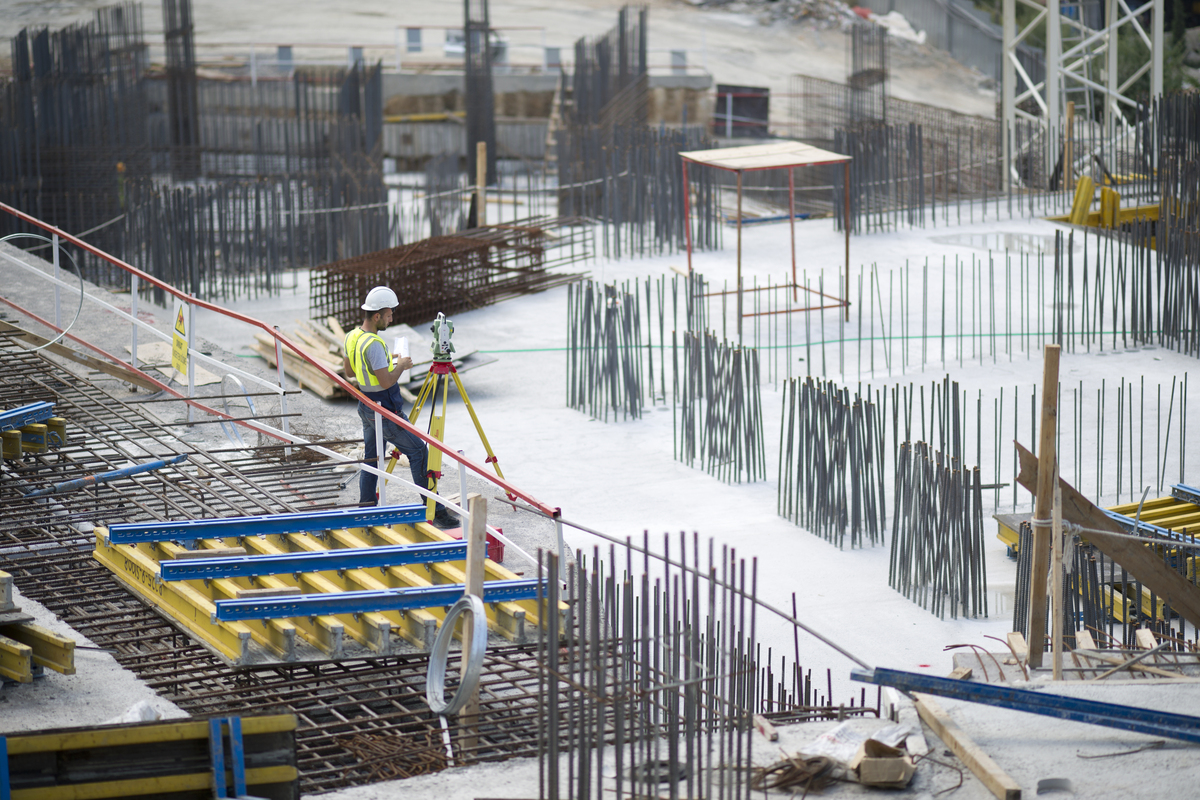
15. Explore Sustainable Practices
Sustainability has emerged as a key factor in the construction sector, encouraging the adoption of eco-friendly practices that reduce environmental effects and support long-term survival. Sustainable construction methods cover a wide range of topics, including resource management, energy efficiency, and waste minimization.
Green building design, which emphasizes enhanced interior air quality, renewable resource utilization, and energy efficiency, is a crucial sustainable technique. Utilizing sustainable building materials minimizes carbon emissions associated with conventional building materials as well as the demand for virgin resources. Examples of such materials include recycled steel, bamboo, and recovered wood.
The incorporation of renewable energy sources is another sustainable strategy. Reduce dependency on fossil fuels by using geothermal, wind, or solar energy to power building sites and even feed any extra energy back into the grid in construction management.
Effective waste management practices are also essential to sustainability initiatives in construction management. The construction industry’s impact on landfills and pollution can be considerably reduced by implementing waste reduction, recycling, and appropriate disposal techniques.
Suggested articles for reading:
Sustainable Architecture Projects
Top 21 Sustainable Buildings
Top 7 Eco Friendly Building Projects
16. Engage with Stakeholders
A key component of efficient construction management is engaging stakeholders. This encourages collaboration and transparency, which eventually results in excellent project outcomes. Clients, investors, local communities, regulatory bodies, contractors, and other parties may be involved in construction projects as stakeholders.
To address their issues, solicit feedback, and keep them updated on project developments, stakeholders must be regularly communicated with. It promotes trust and makes sure that everyone is on the same page regarding the goals and expectations of the project.
In order to deliver updates and receive feedback, engagement tactics may include holding frequent meetings, workshops, or town hall sessions. Information can be disseminated more widely by using various communication methods, such as email, project websites, or social media.
17. Address Concerns and Feedback
An essential component of efficient construction management is responding to complaints and suggestions. Stakeholders, such as clients, contractors, and team members, may ask questions, express dissatisfaction, or make ideas as projects move forward. It’s essential to proactively address these issues and suggestions to guarantee project success and sustain goodwill.
One strategy is to start the project with clear lines of communication. Stakeholders can express their issues and offer input during regular meetings and progress reports. Construction managers can respond quickly and effectively because of the increased transparency and confidence created by this.
Constructive criticism should be welcomed because it frequently identifies potential areas for development. Construction managers can prevent expensive delays or disputes by carefully listening to stakeholders and responding to their concerns. By doing this, they can see problems early on and find solutions that work for everyone involved.

Conclusion
The success of any building project in 2024 will depend on its ability to master the art of construction management. Due to the dynamic and demanding character of the sector, navigating the complexity of contemporary construction requires a proactive and well-prepared approach. Project managers and construction professionals may arm themselves with the information and techniques necessary to drive efficiency, mitigate risks, and assure top-notch project delivery by following the 17 crucial construction management guidelines covered in this guide.
Projects can start on solid ground and move forward smoothly by highlighting the importance of pre-construction site investigation, thorough planning, and excellent team management. It will also protect projects from potential pitfalls, delays, and cost overruns to prioritize risk management, safety procedures, and budget control. Additionally, using cutting-edge building techniques and sustainable business practices will enhance project outcomes while also having a good impact on the environment and society.
Stakeholder engagement and quality control are more important than ever in the connected world of today. Building trust, encouraging collaboration, and producing superior outcomes that endure over time are all possible with construction projects by keeping stakeholders informed, attending to their concerns, and upholding high-quality standards in construction management.
Resources:
Project Management Institute | National Institute for Occupational Safety and Health | Green Building Council | Building Research Establishment | U.S. Green Building Council | United Nations Environment Programme | Construction Specifications Institute | American Society for Testing and Materials | International Code Council | International Labour Organization | Occupational Safety and Health Administration |
Journal articles:
-
- Abdallah, A., & Elbeltagi, E. (2019). Addressing construction project delays using real-time monitoring and decision support systems. Alexandria Engineering Journal, 58(2), 605-614.
- Carmichael, D. G., Cooper, R. A., & Hati, S. (2017). The impact of collaboration on construction project performance. Construction Economics and Building, 17(2), 51-66.
- Chappidi, A. K., & Yousuf, A. (2019). Effects of Quality Materials on the Durability of Construction Projects. Civil Engineering Journal, 5(3), 692-703.
- Choudhry, R. M. (2019). Effective Construction Management: Addressing Challenges through Client-Centered Communication. International Journal of Construction Engineering and Management, 8(1), 12-21.
- Choudhry, R. M., & Shen, L. Y. (2007). Construction project management research: A structural framework. Construction Management and Economics, 25(7), 743-759.
- Construction Industry Institute (CII). (2018). Project Definition Rating Index Version 3.0. Austin, TX: Construction Industry Institute.
- Ghasemi, A., Abdi, M., & Mortaheb, M. (2019). Cost Monitoring and Control in Construction Projects: A Review. Civil Engineering Journal, 5(9), 1913-1927.
- Gray, C., & Flanagan, R. (1989). Communication, Learning and Commitment: A Study of the Construction Project Client. Construction Management and Economics, 7(2), 171-187.
- Green Building Council. (2022). Sustainable Construction: Advancements and Implementations. New York, NY: GBC Press.
- Hillson, D., & Simon, P. (2012). Practical Risk Management: The ATOM Methodology. Management Concepts.
- Jin, X., Doloi, H., & Zhang, G. (2019). Cost overrun assessment in construction projects: A state-of-the-art review. International Journal of Project Management, 37(7), 956-978. doi: 10.1016/j.ijproman.2019.06.010.
- Johnson, M. (2021). The Role of Technology in Construction Management. Journal of Construction Engineering, 28(4), 456-467.
- Jones, A. (2022). The Impact of Technology on Construction Practices. Journal of Construction Engineering, 34(2), 120-135.
- Kang, J., Shen, G. Q., Wu, P., & Kelly, G. (2018). Advantages, barriers and strategies for BIM adoption in the construction industry: A global perspective. Technological and Economic Development of Economy, 24(6), 2144-2164.
- Keane, P. J., & Caletka, A. F. (2017). Enhancing Communication and Knowledge Sharing in Construction Project Management. Journal of Management in Engineering, 33(2), 04016042. doi:10.1061/(ASCE)ME.1943-5479.0000457
- Kumar, A., & Prasad, A. (2018). Proactive construction delay management using data analytics. Procedia Engineering, 212, 3-10.
- Lee, S., & Yu, J. (2020). Critical Success Factors for Building Competent Project Teams: A Systematic Literature Review. Sustainability, 12(21), 8882.
- Li, Y., Shen, G. Q., & Wang, J. (2019). Proactive delay management: An investigation of critical success factors. Journal of Construction Engineering and Management, 145(3), 04018111.
- Nambiar, A. N. (2019). Key Drivers and Challenges of Team Collaboration in the Construction Industry. Engineering, Construction and Architectural Management, 26(9), 1874-1890.
- National Institute for Occupational Safety and Health. (2022). Construction Safety Guidelines: Latest Updates. Washington, D.C.: NIOSH Publications.
- Project Management Institute (PMI). (2017). A Guide to the Project Management Body of Knowledge (PMBOK® Guide) – Sixth Edition. Newtown Square, PA: Project Management Institute.
- Ramezanianpour, A. A., & Vosoughifar, H. R. (2020). The Role of High-Quality Materials in Construction Safety and Sustainability. International Journal of Construction Management, 20(2), 98-111.
- Rowlinson, S., Walker, A., & Cheung, A. (Eds.). (2019). The Wiley Blackwell Handbook of Organizational Capabilities: The Realization of Human Potential. Wiley Blackwell.
- Shrestha, S., & Pant, B. (2018). Significance of High-Quality Construction Materials for Sustainable Infrastructure. Journal of Engineering and Technology, 6(1), 1-10.
- Smith, J. (2022). Emerging Trends in Construction Management. Construction Today, 45(3), 20-26.
- Wang, L., Zhang, X., & Hong, Y. (2018). The influence of collaborative construction on worker motivation and productivity. International Journal of Project Management, 36(1), 172-183. doi:10.1016/j.ijproman.2017.10.006.
- Wells, J. D., & Niewiadomski, A. (2018). Stakeholder Engagement in Construction Project Management: A Review of Tools, Techniques, and Theoretical Perspectives. Construction Economics and Building, 18(3), 26-42.
- Zarei, M., Alaghbari, W., & Behzadan, A. (2018). Review of construction drone applications. Journal of Construction Engineering and Management, 144(11), 04018085.
For all the pictures: Freepik

